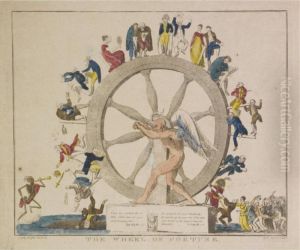Alexander Henderson Paintings
Alexander Henderson was a Canadian photographer known primarily for his landscape images and for being a pioneer in the field of photography in Canada. He was born on December 23, 1831, in Scotland and later emigrated to Canada, settling in Montreal.
Henderson began his career as a dry goods merchant but developed an interest in photography in the 1850s. He was largely self-taught and initially pursued photography as a hobby. His fascination with the medium grew, and by the 1860s, he was recognized as a serious amateur photographer. Henderson's work often featured the Canadian landscape, documenting the wilderness, rivers, and railways that were rapidly transforming the country. His photographs are considered significant for their historical value and their role in the development of Canadian photographic practices.
In 1866, Henderson was elected to the council of the Art Association of Montreal, signifying his status in the artistic community. He also became a member of the Notman Photographic Company, working with William Notman, another prominent figure in Canadian photography. Their collaboration included the creation of composite photographs, a technique that allowed for the combination of several negatives to create a single image, which was innovative for the time.
Henderson's work took him across various regions of Canada, including Quebec, Ontario, and the Maritimes. In the 1870s, he was commissioned by the Canadian Pacific Railway to document the construction of the railway and the landscapes it passed through. These images not only captured the monumental task of building the railway but also encouraged tourism and settlement in the Canadian West.
Throughout his career, Henderson exhibited his photographs in Canada and abroad, gaining international recognition for his work. He continued to photograph into the early 20th century, although his output diminished with age. Alexander Henderson died on April 3, 1913, in Montreal, leaving behind an important legacy as one of Canada's early photographic artists. His work remains a valuable resource for understanding the Canadian landscape and society during a period of significant change and development.
